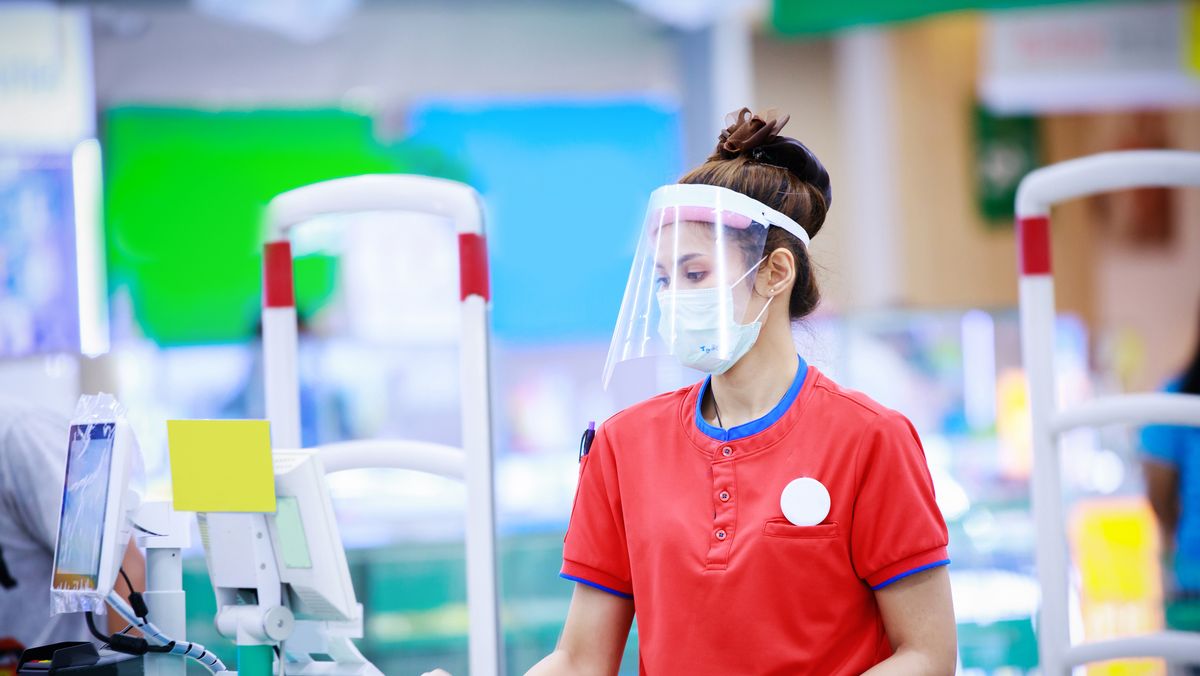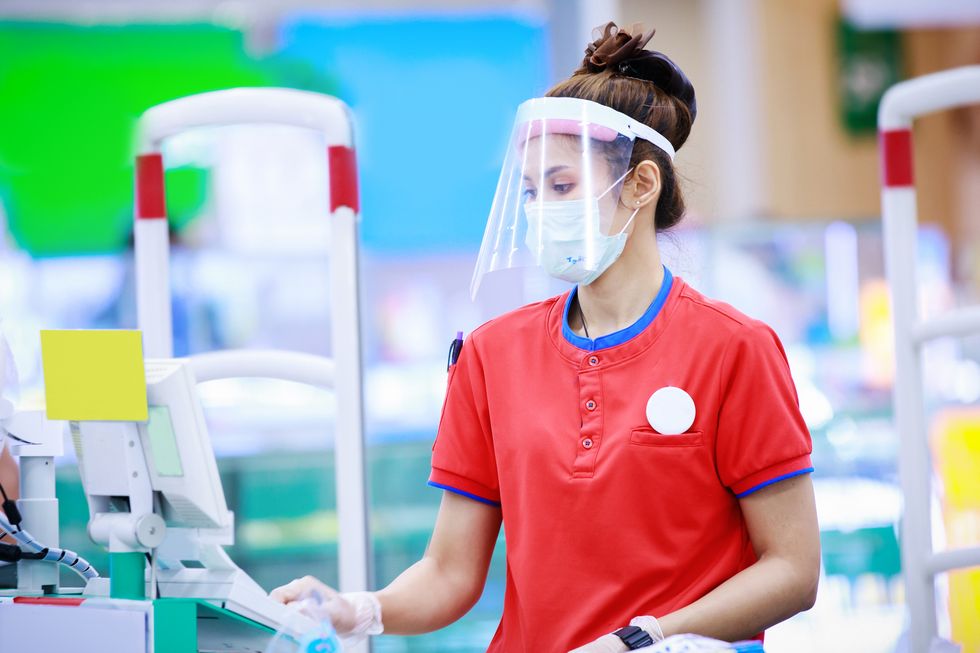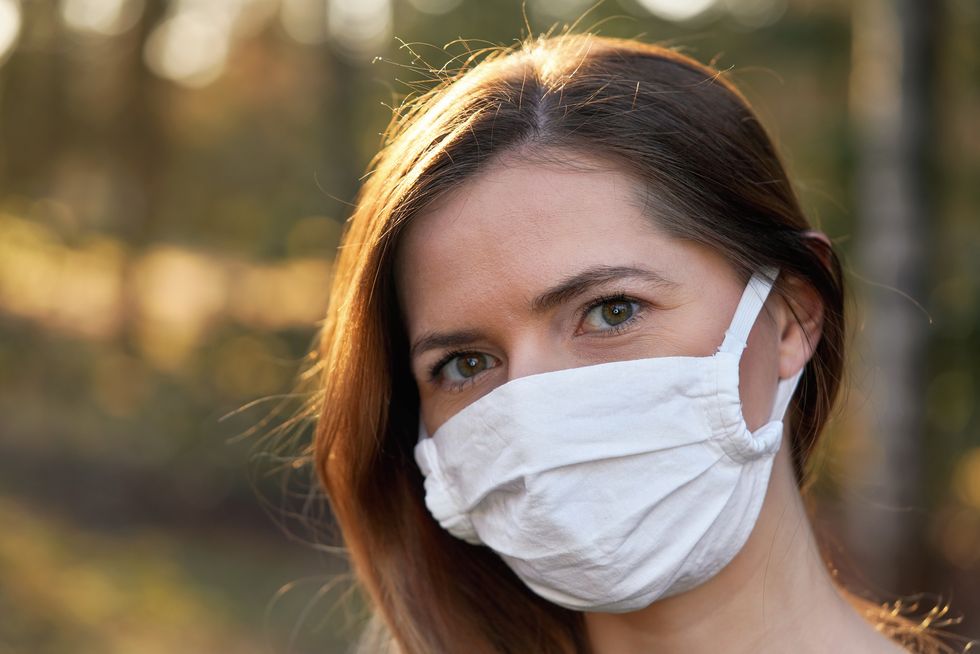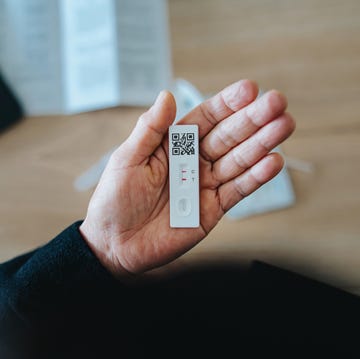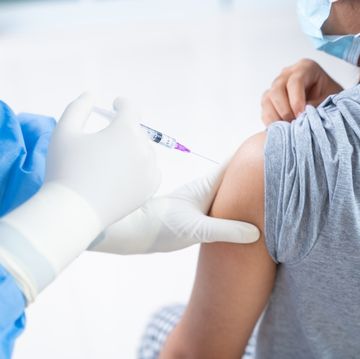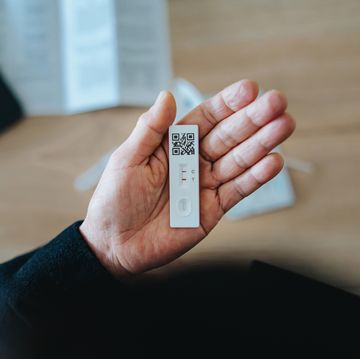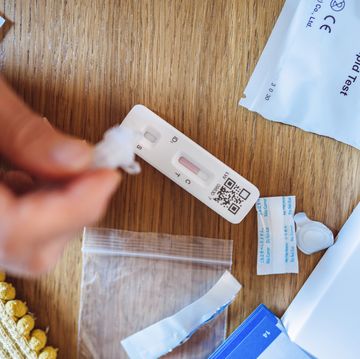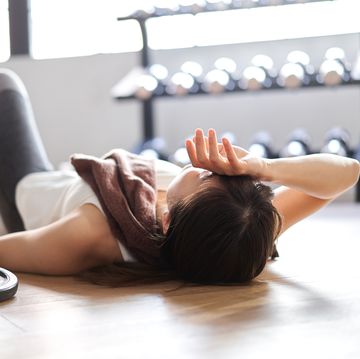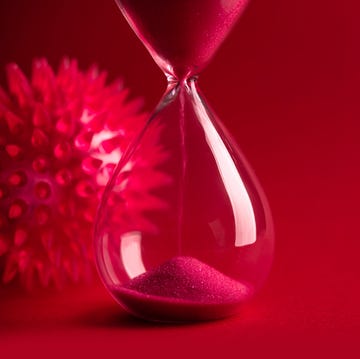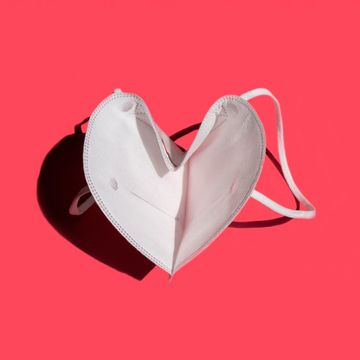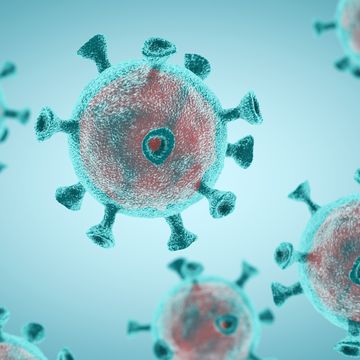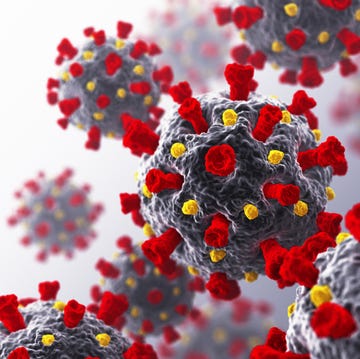Wearing a face mask has officially become the new normal in the United States. People are encouraged, and sometimes even required, to wear them when they’re around others in public to help prevent the spread of COVID-19, the respiratory illness caused by the novel coronavirus. But now, another face covering is gaining some attention: face shields.
Face shields are a layer of clear plastic that is fastened at the forehead head-band style. The actual plastic covers your entire face and usually extends below your chin, says William Schaffner, M.D., an infectious disease specialist and professor at the Vanderbilt University School of Medicine. “A face shield provides a barrier for anything going out, but also for things going in,” he says. The way people in the general public use face shields can vary, Dr. Schaffner explains. Some take their cue from medical professionals and wear a shield on top of a mask; Others just wear a shield alone.
Some scientists are now arguing that face shields might be the next big thing in your coronavirus protection arsenal. A recent opinion article published in the journal JAMA suggests that face shields could help reduce the number of COVID-19 infections when paired with social distancing, good hand hygiene, and increased testing for the virus. Face shields were also recommended as part of a policy review conducted by the Children’s Hospital of Philadelphia (CHOP) for re-opening Pennsylvania schools.
Currently, the Centers for Disease Control and Prevention (CDC) only recommends the use of cloth face coverings to help prevent the spread of COVID-19—but is there a chance face shields could be next? Here’s everything you should know.
Face shields vs. face masks: How do they compare for COVID-19 prevention?
Face shields
Face shields are actually pretty common in hospital settings right now, says Andres Romero, M.D., an infectious disease specialist at Providence Saint John’s Health Center in Santa Monica, Calif. “In our hospital, every person in contact with a patient is wearing a face shield,” he says. “When you’re taking care of a patient, part of your care may require you to have contact with a patient who isn’t wearing a mask. Using a shield on top of a mask can help protect healthcare workers.”
Face shields aren’t perfect—one study that used a cough simulator found that 4% of particles produced by a cough can get under a face shield and be inhaled right after the cough happens—but it still offers some layer of protection. Worth noting, though: After the coughed-out aerosol had dispersed around the room, the face shield only reduced how much infected aerosolized particles were inhaled by 23%.
One 2016 review of research concluded that “due to the lack of a good facial seal peripherally that can allow for aerosol penetration, face shields should not be used as solitary face/eye protection, but rather as adjunctive to other PPE,” like protective face masks and goggles in medical settings. (But remember, we currently wear face coverings to help protect those around us, not necessarily to help protect ourselves.)
While there’s currently no scientific data to support the use of face shields for the general public, that doesn’t mean they can’t be helpful, says Amesh A. Adalja, M.D., infectious disease expert and senior scholar at the Johns Hopkins Center for Health Security. The same 2016 review noted that face shields have tons of advantages, like covering a larger portion of the face, feeling more comfortable, having less impact on breathing, and being inexpensive.
Dr. Adalja thinks face shields have potential to be more effective than face masks alone because “people are much less likely to touch their face when wearing a face shield. They can also be taken off and cleaned. In many ways, they’re a much more attractive option.”
While medical professionals often wear a surgical mask or N95 mask under a face shield, Dr. Schaffner says that’s not really necessary for the general public. “That combination is used by doctors in invasive procedures where they’re creating an aerosol, such as an intubation,” he says. “The average person isn’t going to encounter that. If some people choose to use a face shield going out and about, that might provide a degree of protection that’s comparable to a surgical mask.”
Face masks
While the CDC recommends that the general public wear cloth masks, N95 masks are still considered the gold standard in disease prevention. N95 masks form a tight seal across your nose and mouth, and filter out most airborne particles (including the ones that cause COVID-19). N95s are more effective than other options, like surgical masks, but the CDC still recommends that those be reserved for healthcare workers.
In order of effectiveness against COVID-19, N95 masks are first, followed by surgical masks, and then homemade cloth masks, Dr. Schaffner says.
That’s because the effectiveness of homemade masks is questionable, Dr. Adalja points out. A paper published by The National Academy of Sciences, Engineering, and Medicine in early April looked at limited, indirect evidence from lab studies on homemade fabric masks and found that, while they may capture large respiratory droplets, there is no evidence they can filter out SARS-CoV-2, the virus that causes COVID-19.
A pre-pandemic study that analyzed the effectiveness of homemade masks against the flu also concluded that, while a homemade mask is better than no mask, they “should only be considered a last resort” to help prevent the transmission of droplets from people who are infected.
But the CDC is still encouraging people to wear cloth masks, largely because there is a risk of spreading COVID-19 even if you don’t have symptoms, Dr. Schaffner says. Again: Some kind of mask is better than nothing at all in these circumstances, as the U.S. is approaching nearly 2 million confirmed cases of COVID-19.
Could face shields be recommended by public health organizations in the future?
Experts are mixed on this one. Some think the inherent style of a face shield will make them less attractive to the general public, while others say there’s potential.
“Generally, they aren’t very comfortable and are difficult to wear for extended periods. Face shields also get fogged up and are hot to wear after a while,” says Richard Watkins, M.D., an infectious disease physician and a professor of internal medicine at the Northeast Ohio Medical University. “Because of this, the general public isn’t likely to find wearing them practical,” especially if they have to be worn in addition to a mask.
There are social factors to consider, too. Dr. Schaffner points out that communicating in a face shield can be difficult because “it makes you really have to project your voice to be heard clearly.”
Dr. Romero believes that if you’re practicing social distancing and washing your hands regularly, a face shield isn’t totally necessary. However, he points out that just a few months ago, the CDC and other public health organizations said that face masks weren’t necessary “and now we’re all encouraged to wear them.”
Public health officials could eventually recommend the use of face shields “but we need data” to truly support it, adds Suzanne Willard, Ph.D., a clinical professor and associate dean for global health at the Rutgers School of Nursing.
Dr. Adalja doesn’t think public health officials will recommend doing away with cloth masks, though. “I do think that what might happen is they may recommend wearing some kind of face covering,” he says, whether it’s a face shield, a mask, or maybe even both.
Support from readers like you helps us do our best work. Go here to subscribe to Prevention and get 12 FREE gifts. And sign up for our FREE newsletter here for daily health, nutrition, and fitness advice.
